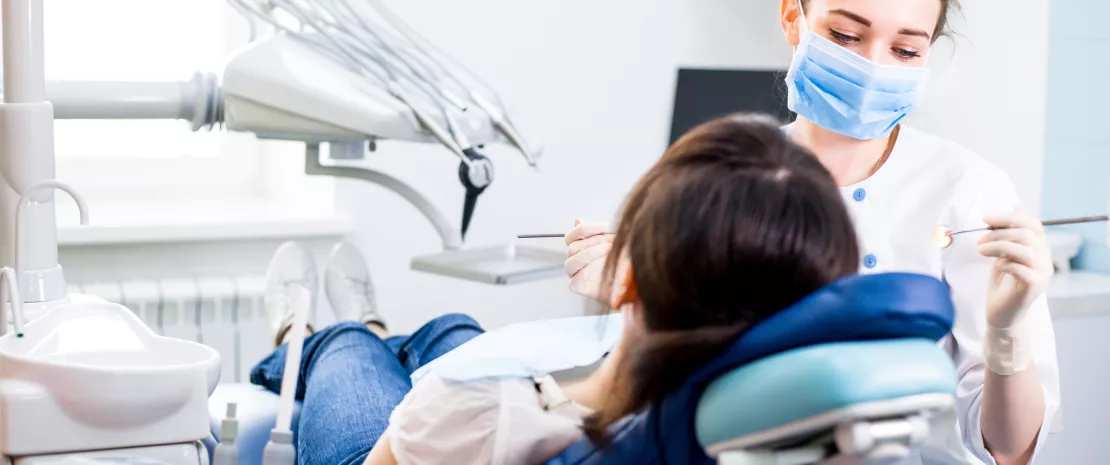HIV, oral diseases, and oral microbiota: links to explore
Stomatitis, cavities, gingivitis and other gum disease… Even with antiretroviral therapy, HIV-infected individuals are at an increased risk of oral diseases. The immune disturbances behind this vulnerability are not fully understood, but persistent inflammation and an imbalance of the oral microbiota appear to be involved.
- Learn all about microbiota
- Microbiota and related conditions
- Act on your microbiota
- Publications
- About the Institute
Healthcare professionals section
Find here your dedicated section
Sources
This article is based on scientific information

About this article
December 1 is World AIDS Day. To mark the occasion it's worth bearing in mind that the human immunodeficiency virus (HIV) attacks specific white blood cells called CD4+ T cells. The weakening of the immune system allows opportunistic infections, cancer, and other diseases of the organs to develop. Today, antiretroviral therapy can restore CD4+ T cell counts and lower the viral load to undetectable levels. Unfortunately, this does not protect against all of HIV's adverse effects. Inflammation of the oral cavity is particularly common HIV-infected individuals and is often associated with an imbalance in the oral microbiota.
Gut imbalance plays role in immune response to infection
HIV activates the CD4+ T cells, which then exhaust themselves trying to fight the virus. The virus eventually destroys the cells or prevents them from functioning properly. In addition, the gut microbiota loses its balance, (dysbiosis), with certain beneficial bacteria (such as (sidenote: Lactobacilli Rod-shaped bacteria whose main characteristic is the production of lactic acid, from where they get the name “lactic acid bacteria”. Lactobacilli are present in the oral, vaginal and gut microbiota of humans, but also in plants and animals. They are found in fermented foods, such as dairy products (e.g. certain cheeses and yoghurts), pickles, sauerkraut, etc. Lactobacilli are also found in probiotics, with certain species recognized for their beneficial properties. W. H. Holzapfel et B. J. Wood, The Genera of Lactic Acid Bacteria, 2, Springer-Verlag, 1st ed. 1995 (2012), 411 p. « The genus Lactobacillus par W. P. Hammes, R. F. Vogel Tannock GW. A special fondness for lactobacilli. Appl Environ Microbiol. 2004 Jun;70(6):3189-94. Smith TJ, Rigassio-Radler D, Denmark R, et al. Effect of Lactobacillus rhamnosus LGG® and Bifidobacterium animalis ssp. lactis BB-12® on health-related quality of life in college students affected by upper respiratory infections. Br J Nutr. 2013 Jun;109(11):1999-2007. ) ) becoming less abundant, while other species, including some (sidenote: Pathogen A pathogen is a microorganism that causes, or may cause, disease. Pirofski LA, Casadevall A. Q and A: What is a pathogen? A question that begs the point. BMC Biol. 2012 Jan 31;10:6. ) , proliferate. The infection also attacks the intestinal mucosa, which loses its impermeability, and releases its contents. This causes inflammation to spread throughout the body, damaging the organs. The result is a vicious circle, with inflammation driving HIV replication. Early antiretroviral therapy preserves the integrity of the intestinal mucosa and the balance of the gut microbiota. However, it does not prevent the persistence of inflammation, which is likely to increase the risk of oral disease.
HIV and oral diseases: initial hypotheses and solutions
Why does HIV infection weaken the oral mucosa and increase the risk of oral diseases, even when controlled by treatment? One possible explanation is that HIV impairs the production of secretory immunoglobulin A antibodies in the saliva, which are considered the first line of defense against oral pathogens. It may also be because the loss of CD4+ T cells, as in the gut microbiota, results in inflammation and oral dysbiosis. However, few studies have analyzed the oral microbiota composition of HIV-infected individuals and the results of such studies are not always consistent. In addition, it is currently very difficult to assess the impact of the virus itself, versus that of the treatment, on oral bacterial communities.
(sidenote: A scientific review published in September 2021 provides an update. ) . Such research is essential to the discovery of therapies that relieve the distressing oral symptoms of HIV. "Probiotic" approaches have already been proposed for the prevention of oral diseases. One example is the displacement of one bacterial strain that causes cavities with another that is engineered to have low pathogenicity. Well-conducted clinical trials are now needed to assess the efficacy of using probiotic strains and antimicrobial agents to improve oral immune functions.
Coker, Modupe O et al. “HIV-Associated Interactions Between Oral Microbiota and Mucosal Immune Cells: Knowledge Gaps and Future Directions.” Frontiers in immunology vol. 12 676669. 20 Sep. 2021.













